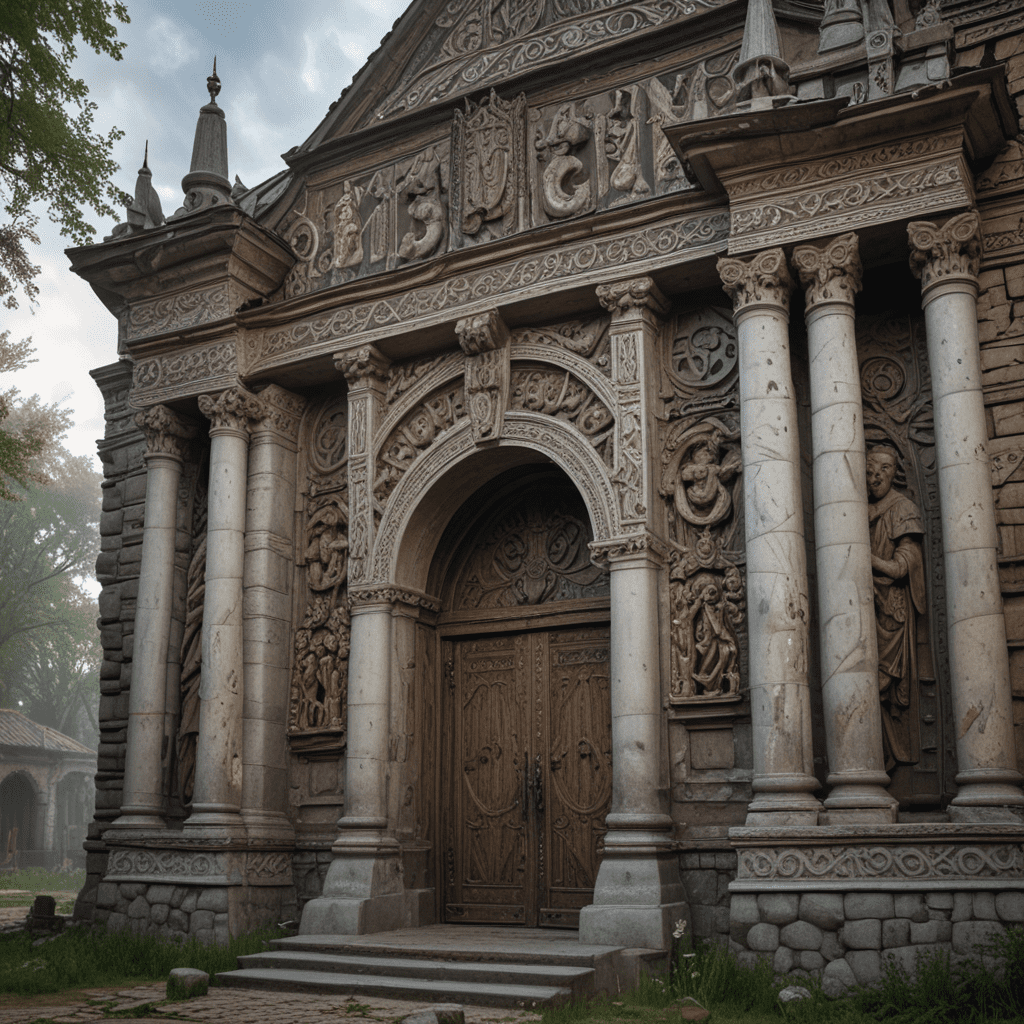The Floods of the Mediterranean: Myths from Ancient Civilizations
I. Introduction
The Mediterranean region, a cradle of ancient civilizations, has long been a significant area both geographically and culturally. This sea, bordered by countries such as Greece, Italy, Egypt, and Turkey, has witnessed the rise and fall of empires, the birth of philosophies, and the flourishing of arts and sciences. Throughout history, the Mediterranean has also been a stage for natural disasters, particularly floods, which have inspired a rich tapestry of mythological narratives.
Floods hold a prominent place in the mythologies of ancient civilizations. They often symbolize chaos, renewal, and the cyclical nature of life. This article aims to delve into the various flood myths from Mediterranean cultures, exploring how these stories reflect the values and beliefs of the societies that created them.
II. Geological and Climatic Background
The Mediterranean climate is characterized by hot, dry summers and mild, wet winters, leading to a unique relationship between its peoples and the environment. Historically, this region has experienced notable climate patterns and significant flood events, such as the catastrophic flooding of the Nile and the inundations caused by heavy rains in the Levant.
Many ancient civilizations were closely tied to their local environments, and natural disasters often became intertwined with their mythology. The connection between real events and mythological narratives is a powerful reminder of how humans have sought to explain and understand their world.
III. The Flood Myth in Ancient Greek Culture
Among the most famous flood myths in Greek culture is the story of Deucalion and Pyrrha. According to legend, Zeus decided to flood the earth to cleanse it of human wickedness, sparing only Deucalion, the son of Prometheus, and his wife Pyrrha. They built an ark to survive the deluge and, after the waters receded, repopulated the earth by throwing stones over their shoulders, which transformed into humans.
This myth carries deep symbolism of rebirth and renewal, reflecting the cyclical nature of life and the belief that from destruction comes new beginnings. Comparatively, the Greek flood myth shares similarities with other cultures’ narratives, highlighting common themes of survival and divine retribution.
IV. The Biblical Account: The Great Flood in the Mediterranean Context
The biblical account of Noah’s Ark is perhaps one of the most well-known flood myths, recounting how God decided to cleanse the earth of its corruption through a great flood. Noah, a righteous man, was instructed to build an ark to save his family and pairs of every animal species.
This story is heavily influenced by earlier Mesopotamian flood myths, such as the Epic of Gilgamesh, which also features a great flood and a hero tasked with preserving life. The theological implications of these narratives extend into their cultural significance, highlighting themes of obedience, faith, and the relationship between humanity and the divine.
V. Roman Interpretations of Flood Myths
The Romans inherited many myths from the Greeks, including flood narratives. In Virgil’s “Aeneid,” a flood plays a significant role in the destiny of Aeneas and his journey to found Rome. The symbolism of floods in Roman literature often represents both destruction and the potential for new beginnings.
Roman art and literature frequently depicted flood themes, showcasing the influence of Greek mythology and adapting these stories to fit their own cultural contexts. This blending of narratives highlights the fluidity of myth across civilizations.
VI. Flood Myths from Ancient Egyptian Civilization
In ancient Egypt, the Nile River was central to life, and its annual inundation was not seen as a disaster but as a vital event for agriculture. The floods of the Nile were associated with the god Osiris, who represented death and rebirth. The inundation brought fertility to the land, symbolizing the cyclical nature of life.
The role of floods in Egyptian cosmology emphasized balance and order, contrasting with the chaos represented in other mythologies. This connection between the Nile and divine figures illustrates how floods shaped agricultural practices and religious beliefs.
VII. The Flood in Phoenician and Canaanite Myths
The Phoenician and Canaanite myths feature stories such as that of Baal and Yam, where the struggle between the god of storms, Baal, and the god of the sea, Yam, symbolizes the conflict between chaos and order. The floods in these narratives often represent the tumultuous nature of existence and the gods’ control over the elements.
The cultural significance of these myths influenced neighboring civilizations, highlighting how shared beliefs and narratives evolved over time. The stories of Baal and Yam reflect the importance of water and storms in agrarian societies.
VIII. Comparative Analysis of Mediterranean Flood Myths
A comparative analysis of Mediterranean flood myths reveals common themes across cultures, such as:
- The duality of chaos and order
- The symbolism of rebirth and renewal
- The divine punishment of humanity’s wickedness
While the narratives vary in details and characters, the underlying messages resonate similarly across different cultures. The environment played a crucial role in shaping these mythological stories, with geographical factors influencing the specific details of each flood narrative.
IX. The Legacy of Flood Myths in Modern Culture
The ancient myths of floods continue to influence contemporary literature and art, appearing in various forms in modern storytelling. Authors and artists draw upon these rich narratives, reinterpreting them for new audiences and contexts.
Additionally, these stories remain relevant in discussions about environmental issues, particularly concerning climate change and natural disasters. Flood myths serve as reflections of human resilience and adaptation, reminding us of our historical struggles with nature.
X. Conclusion
In summary, the flood myths of the Mediterranean offer profound insights into the values and beliefs of ancient civilizations. From the tales of Deucalion and Noah to the symbolism found in Egyptian and Canaanite narratives, these stories reveal the enduring power of myths in understanding human history and culture.
As we explore these ancient narratives, we recognize their significance in shaping our collective consciousness and their relevance in today’s world, where the relationship between humanity and nature continues to evolve.



